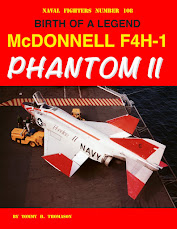Many of the problems that the helicopter was the solution for were identified in the decade or so after Larry Bell and Igor Sikorsky were successful with theirs. One was mine sweeping. In October 1950, the U.S. Navy needed to sweep the waters off Wonsan, Korea for an amphibious assault. Due to budget restrictions and the lack of need following World War II, mine-sweeping capability/capacity had been neglected by the U. S. Navy while other countries had focused on anti-ship mine development. As a result, a very small force of mine sweepers was tasked with clearing what proved to be an enormous field of Soviet-supplied mines. Light observation helicopters were used to spot mines ahead of the
sweepers but the pilots and observers could only detect ones floating
near the surface, a small portion of the defense-in-depth of various mine types. Although eventually successful in clearing an approach into the harbor, three mine sweepers were sunk, two USN and one ROK, and more than a dozen sailors killed.
The problem was that the mine sweeper on point, leading a wedge of mine sweepers clearing a channel, was too susceptible to being sunk by a mine. What a helicopter could do was tow sweeping gear ahead of the lead ship to minimize the risk to it of a mine encounter without risk to itself.
VX-1 commenced helicopter-tow testing with the Piasecki HRP-1 tandem-rotor helicopter in November 1952. It was the biggest, most powerful helicopter available at the time. For the testing off Panama City, Florida, they were stripped of fabric to reduce download and weight. Flotation was also added to allow for a water landing in the event of failure of its single engine.
The Navy borrowed at least one Piasecki H-21 helicopter from the Air Force in 1953 to evaluate it as a candidate for operational mine sweeping. The tandem-rotor configuration was preferred because all of the engine power went to lift and unlike a single-rotor helicopter with a tail rotor, it was insensitive to cross and tail winds.
In 1954, the Bureau of Aeronautics contracted with Bell Helicopter to make modifications to its HSL antisubmarine warfare helicopter to optimize it for mine sweeping. One requirement was to insure adequate engine cooling and oil supply at extreme nose-down attitudes.
By 1956, the HSL was successfully qualified as a mine sweeper and adequate numbers had been built for a mine-sweeping fleet. Here it is pulling a large salvage barge to demonstrate its towing capability.
However, when further HSL production for the ASW mission was cancelled in favor of the Sikorsky HSS-1 Sea Bat, the HSL was not deployed and utilized only for development of mine-sweeping gear. (For more on the Bell HSL program, see my monograph:
http://tommythomason.com/books/Bell-HSL/)
In October 1962, the CNO directed BuAer to develop an operational helicopter minesweeper. The tandem-rotor Vertol H-46 was preferred but the decision was to convert nine early production SH-3As to the RH-3A configuration instead (the R prefix indicated a modification for reconnaissance, which apparently was considered to be the most descriptive of those available). Beginning in 1964, Sikorsky removed the ASW mission equipment from these helicopters and installed tow hardware on a beefed-up lower rear fuselage. A sliding door was added to the left side of the fuselage and a bulged observation window added on each side of the fuselage at the rear of the cabin.
In September 1966, NATC (Naval Air Test Center) accomplished a two-day shipboard suitability test of the RH-3A aboard Ozark (MCS-2). In 1967, HC-6 on the east coast and HC-7 on the west coast commenced operations with RH-3As.
Although demonstrating capability, there were teething-problems (the tail rotor proved inadequate and was reportedly replaced by a larger one, for example) and the RH-3A was under powered for some towing equipment. As a result, the Navy transferred 15 CH-53As from the USMC to AMCM (Airborne Mine Countermeasure) duty. These were equipped with more powerful engines and modified for the mine-sweeping mission. In addition to being larger and more capable, they had a rear ramp that made deployment, observation, and retrieval of the mine-sweeping gear much more straightforward. These were designated RH-53As and in 1971 assigned to a new helicopter squadron, HM-12, that was dedicated to mine sweeping.

In the meantime, BuAer had contracted with Sikorsky for 30 RH-53Ds, a derivative of the CH-53D Sea Stallion, which had first flown in January 1969. HM-12 received the first of these in August 1973. These were further refined for the mission, including the addition of inflight refueling capability.
Further development of the H-53 resulted in the CH-53E Super Stallion, a major upgrade that added a third T64 engine aft of the main transmission for even more power. The MH-53E Sea Dragon was the mine-sweeping variant, with the prefix "M" for multi-mission replacing the prior "R". It featured huge sponsons for additional fuel capacity and a flight control system optimized for the mine-sweeping mission. The prototype first flew in December 1981. It was deployable in 1986, replacing the RH-53Ds. Fifty were built.
U.S. Navy photo by Chief Mass Communication Specialist Edward G. Martens
In the late 1990s, the CNO initiated a program for a set of AMCM systems to be utilized by deployed helicopter squadrons flying the MH-60S Knighthawk, which is otherwise utilized for cargo/personnel transport. It is not a mine sweeper per se, but can be equipped to spot some mine types and neutralize them. An MH-60S (HSC-28) and an MH-53E (HM-14) at NAS Key West during joint MCM exercises in 2021:



















_15_conducts_a_mine_sweeping_exercise.jpg)


